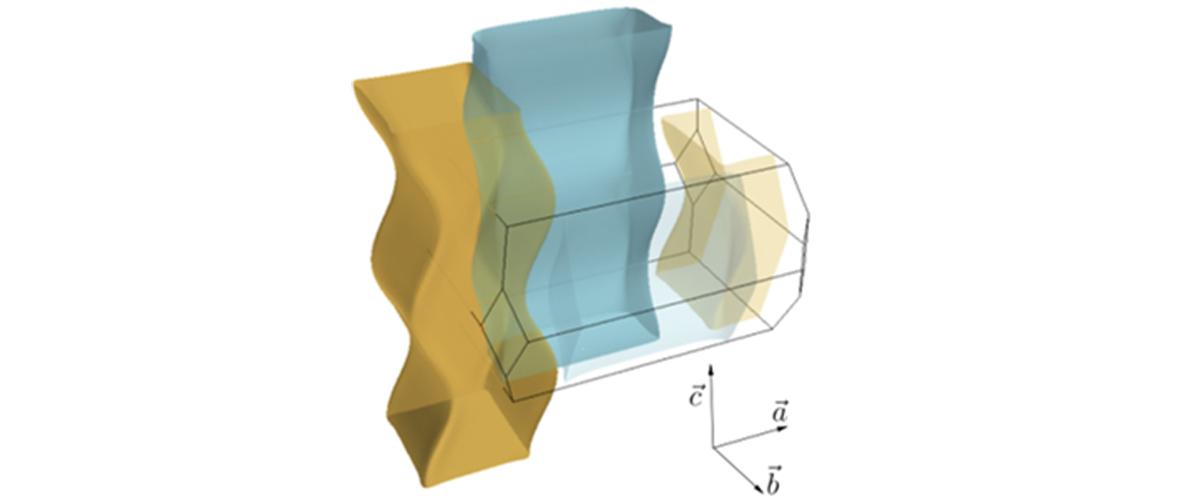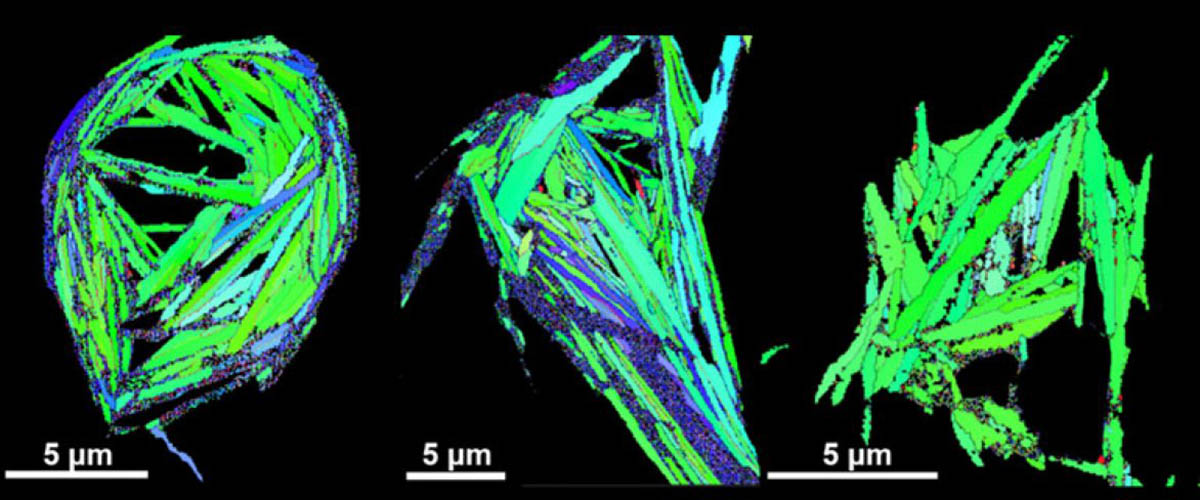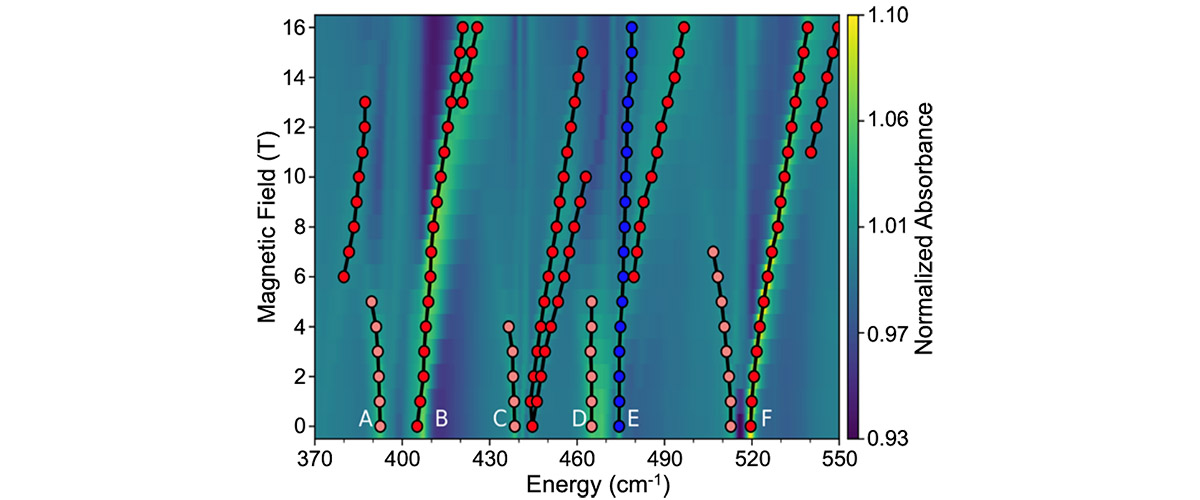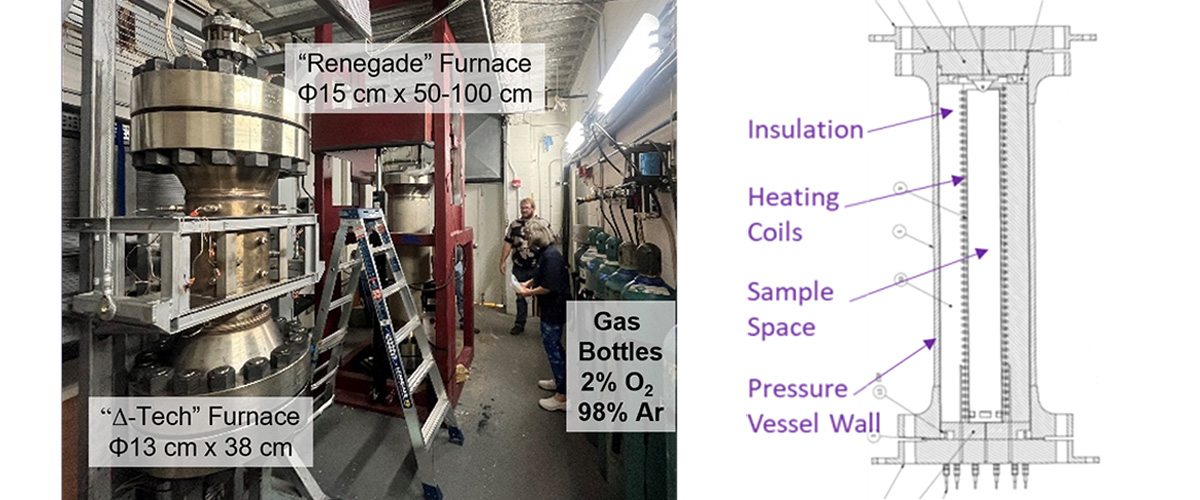What did scientists discover?
Applying high magnetic fields at ultralow temperatures enabled a detailed mapping of the electronic properties of the anomalous superconductor UTe2. Researchers performed rotational and temperature-dependent quantum oscillation studies to fully map out the Fermi surface of UTe2. The measurements resolved two quasi-2D cylindrical sheets with very heavy effective masses over 40 times the free-electron rest mass, indicative of strong quantum correlation effects.
Why is this important?
UTe2 exhibits a wealth of exotic physical phenomena, including pair-density wave pairing and multiple magnetic field- and pressure-induced superconducting phases. At least one of these superconducting states persists to spectacularly intense magnetic fields > 60T, which poses a formidable puzzle, given the low superconducting critical temperature of 2K.
Research on UTe2 came alive at the MagLab in 2019 when a high field re-entrant superconducting phase (Lazarus) was found that turned on at 40T and persisted to 65T, raising a lot of new questions for scientists and triggering an avalanche of investigations.
Gaining a detailed understanding of the electronic properties of UTe2, through Fermi surface measurements such as these, is the first step on the road to building a detailed microscopic understanding of how the exotic physical phenomena arise in UTe2. Spin triplet superconductors like UTe2 are extremely rare in nature and are a promising avenue for next-generation topologically-protected quantum computation.
Who did the research?
A.G. Eaton1, T. I. Weinberger1, N. J. M. Popiel1, Z. Wu1, A. J. Hickey1, A. Cabala2, J. Pospíšil2, J. Prokleška2, T. Haidamak2, G. Bastien2, P. Opletal3, H. Sakai3, Y. Haga3, R. Nowell4, S. M. Benjamin4, V. Sechovský2, G. G. Lonzarich1, F. M. Grosche1, & M. Vališka2
1University of Cambridge; 2Charles University, Prague; 3Japan Atomic Energy Agency; 4National MagLab
Why did they need the MagLab?
High magnetic fields were needed to destroy the superconductivity and allow quantum oscillations to be observed. Ultralow temperatures down to 19mK were required due to the large effective mass of the quasiparticles that quickly attenuates the quantum oscillations as the temperature is increased up to 200mK. These measurements were therefore only possible in the world-unique experimental conditions provided by the MagLab’s 32T all-superconducting magnet (SCM 4).
Details for scientists
- View or download the expert-level Science Highlight, Quasi-2D Fermi Surface in the Anomalous Superconductor UTe2
- Read the full-length publication, Quasi-2D Fermi surface in the anomalous superconductor UTe2, in Nature Communications, Data Set.
Funding
This research was funded by the following grants: A.G. Eaton (GBMF5305, EP/P024947/1, EP/M000524/1); F.M. Grosche (EPSRC EP/X011992/1); M. Vališka (LM2023065); G.S. Boebinger (NSF DMR-1644779)
For more information, contact Tim Murphy.






